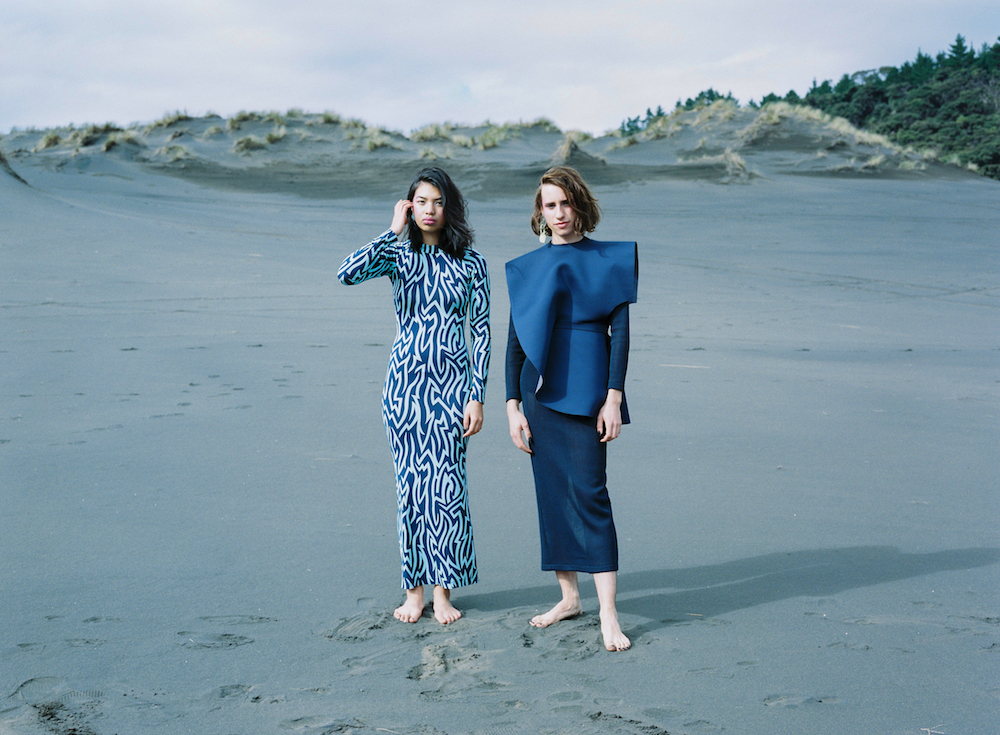Gender neutral fashion is more than just a trend to many consumers. It is a way to express themselves and dress in a way that they feel most closely suits their identities and personalities. The New Zealand fashion industry is making great strides in this area, but also has some way to go. Apparel interviewed designer Natasha Ovely and a representative of the New Zealand LGBTQ+ organisation Rainbow Youth, Victoria Trow to unpack gender-neutral fashion from both a brands and consumers perspective.
According to Trow, one of the most significant issues with the gender-neutral market place in New Zealand is our brands' interpretation of gender-neutral clothing as apparel without feminine signifiers. Thus designs appear masculine rather than neutral. “A lot of clothes that are more gender neutral come from the ‘men’s’ section, and are designed for a very specific body type, and so a lot of people who were assigned female at birth end up wearing very baggy ‘men’s’ clothes as the easiest way to achieve the gender-neutral look they want.” Blending gender signifiers creates more of an authentically neutral design, allowing consumers to feel that their identities are being represented by their clothes, rather than hidden behind them. “It’s hard to break out of viewing ‘men’s’ clothes as the neutral option. I’m guilty of it too, as being female makes me err towards ‘men’s’ clothes as a way to try and negate my feminine presentation. But dresses and skirts can be gender neutral - we’re just not used to thinking that way.”
Outside of design, it is the fit of gender-neutral collections which most of these consumers find difficult to tie down. “It’s hard navigating shirts that aren’t feminine but also accommodate breasts or non-feminine pants that accommodate large hips but don’t leave the rest of the leg baggy,” said Trow. Consumers of gender-neutral clothing are calling for clothes which are designed not just for their identities, but their bodies. Fit is crucial to any flattering design; gender-neutral consumers are no different. New Zealand designer Natasha Ovely uses unique strategies to combat fit issues for her consumers. “Having a made to order option is a great way to ensure that the garments fit my customer well and allows me to attend to any specific physical adaptations they might need to address,” said the designer. For Ovely, using a made to order service allows her consumers to engage with her brand and aesthetic without fear of fitting issues, making her a unique point of call for gender-neutral consumers around the country.
"Talk to gender diverse people. Involve us in your work. There will always be haters, but we won't know you are there unless you tell us.”
Many brands are afraid of the gender-neutral consumer, as it is very much an untapped market. But it is also one bursting with enthusiasm, waiting for brands and collections which are tailor-made for them. Ovely and Trow agreed that retail presentations are a key area which can make or break a brand’s gender-neutral presentation. Trow articulated the experience of many gender-neutral shoppers who feel isolated by retail staff that do not understand their aesthetics. “Most clothing places don’t really have clothing that is purposely gender neutral, or staff that understand that people want to wear clothes that don’t align with their assigned sex,” explained Trow. By hiring retail staff who understand or even share your consumers gender-neutral aesthetic, the overall experience of your brand can become less othering. Ovely implements this strategy by ensuring her retail staff are not only open-minded but enthusiastic about gender-neutral fashion. “The most important thing I’d like to ensure is that the staff in the store are knowledgeable, respectful and conduct themselves with openness with any gender-neutral customer,” articulated the designer. “Hiring staff that identify as gender-neutral to represent the store through their unique styling would be a great way to show potential customers that a sense of freedom and playfulness to their shopping experience is welcome.”
The New Zealand fashion industry has a mostly untapped market sitting at their fingertips and engaging to this consumer could build a large and loyal clientele for retailers and designers alike. Both Trow and Ovely believed the most effective methods of appealing to this consumer, is simply by working with them. “Speak to your consumers, there isn't one uniform perspective when it comes to non-binary fashion, try to understand the different needs or wants you could be fulfilling,” expressed Ovely, whose sentiment was shared by Trow. “Talk to gender diverse people. Involve us in your work. There will always be haters, but we won't know you are there unless you’re telling us.”






